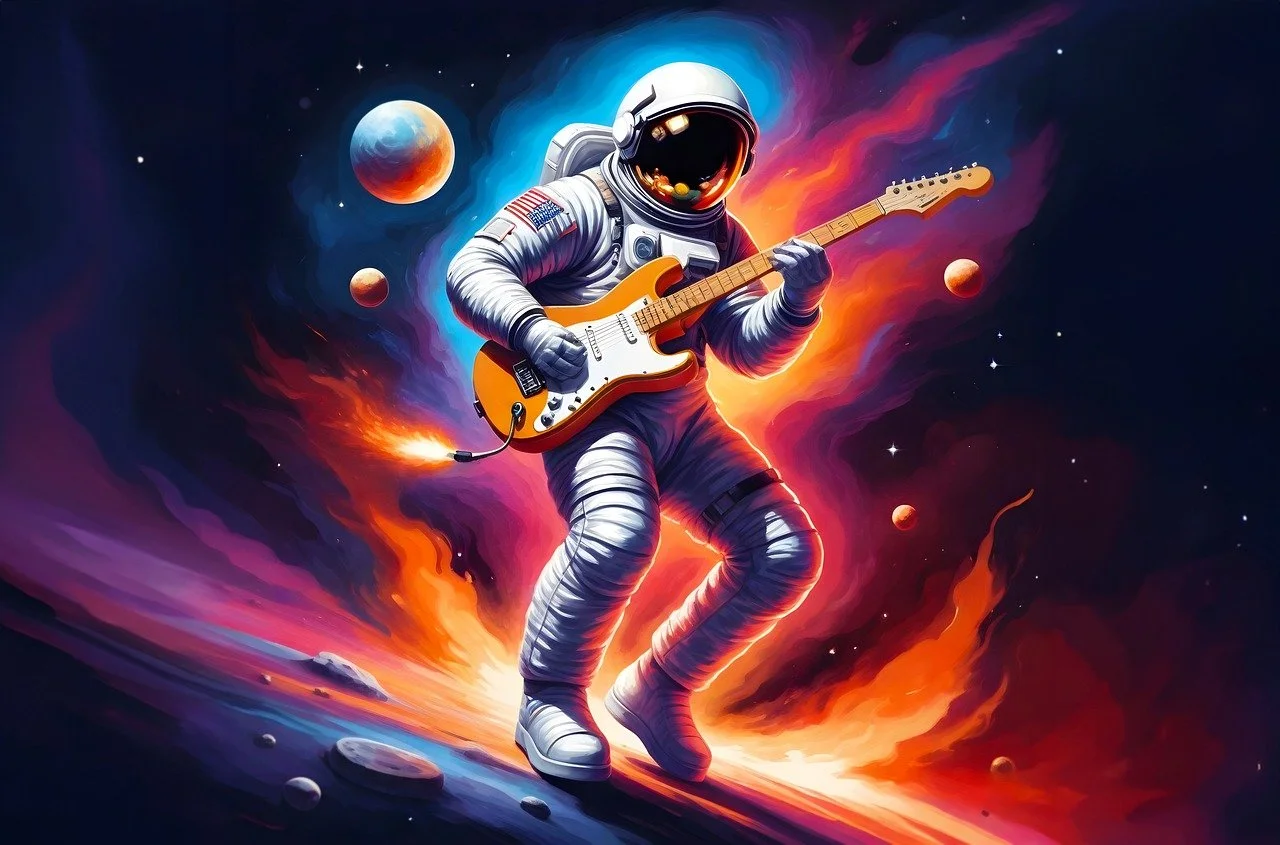Introduction:
Have you ever wondered if artificial intelligence could help artists ? Despite the backlash that AI art generators often receive from the creative community, there’s a growing realization that these tools can be incredibly beneficial. Whether you’re a hobbyist sketching on weekends or a professional artist crafting your next masterpiece, generative AI offers a surprising array of opportunities to enhance your work and workflow. In this blog post, we’re going to explore five practical ways you can leverage generative AI to elevate your art. By the end, you’ll discover how AI can help you innovate, save time, and even boost your creativity. So, let’s get started and see how these tools can become your new best friend in the art world.
1. Brainstorming Topic Ideas
At some point on your art journey, you’ll encounter those frustrating times when ideas seem to run dry. It happens to everyone, whether you’re a painter, sculptor, or photographer. But the good news is, with today’s technology, brainstorming new topics and concepts has become much easier. Generative AI, in particular, can be a fantastic tool to help you break through creative blocks and come up with fresh, exciting ideas for your art.
For instance, I decided to test this out myself. I asked ChatGPT to suggest some new street photography ideas for Copenhagen, where I live. I made sure to include details about my experience and the equipment I use, specifically my Fujifilm XS-10 camera and requested some creative suggestions for my next project. Within moments, I received 16 unique ideas tailored to my needs, plus some handy tips to enhance my street photography. This kind of prompt can be applied to any creative discipline, making generative AI a versatile assistant in your creative process.
Aside from using AI, there are many other ways to keep your creativity flowing. Sometimes, it’s about changing your environment, seeking inspiration from different sources, or collaborating with others. By combining these approaches with the power of generative AI, you’ll find it much easier to keep those creative juices flowing and discover new directions for your artistic projects.
2. Creating Prototypes
When I head out for photoshoots, I often end up tossing my plans aside because things rarely go as expected. Yet, having a rough idea or some sort of blueprint for the types of art you’d like to create can provide a valuable sense of direction. This is where creating prototypes can be incredibly helpful, especially for artists.
Prototyping isn’t just for engineers or tech developers; it’s a great tool for artists too. Think of it as creating a draft for your art. By sketching out rough ideas beforehand, you can explore different concepts and compositions, which helps in making your final artwork more polished and intentional. It’s like having a roadmap that guides you through your creative journey, even if you decide to take a few detours along the way.
Generative AI can be particularly useful in creating these prototypes. Imagine telling an AI tool what you’re thinking for your next piece, and it generates a variety of sketches based on your description. For example, you could prompt the AI with “a surreal landscape with floating islands and mysterious creatures” and it will generate several versions of this concept. This not only gives you a visual starting point but also sparks new ideas that you might not have considered otherwise.
Using generative AI in this way helps you bring your initial concepts to life quickly. You can see what works and what doesn’t in a matter of minutes. This makes it easier to refine your ideas and push your creativity further. You might discover that the AI’s interpretation of your prompt inspires you to take your artwork in a completely new direction. Plus, you can learn from the AI’s approach and see areas where you can add your unique touch or improve your technique.
3. Setting Routines
Work, family commitments, and the everyday stresses of modern life can often make it challenging to find time for creative pursuits. Yet, for many artists, staying connected to their craft is crucial for their well-being and overall happiness. Even with a busy schedule, setting routines can help you maintain a balance and ensure that you continue nurturing your creative outlets.
If you’re not sure where to begin with creating a routine that fits your life, generative AI can be a valuable tool. For instance, I asked ChatGPT to help me design a weekly schedule to keep up with my photography hobby.
Experimenting with the suggestions from AI can help you find a routine that works best for you. You might find that spending an hour each day on your art, whether it’s drawing, painting, or photography, can be both relaxing and invigorating. It’s also important to customize these routines to fit your lifestyle. Maybe you prefer longer, more focused sessions on weekends, or perhaps shorter, daily sessions work better for you. The key is to try different approaches and see what feels most manageable and fulfilling.
4. Researching New Tips and Tricks
Generative AI can be a fantastic resource for artists looking to learn more about their craft and improve their skills. It’s a bit like having a knowledgeable friend who’s always ready to share helpful tips and guide you to the best resources. Here are two great ways you can use AI to enhance your art journey:
First, you can ask the AI for useful resources related to your favorite forms of art. Whether you’re into painting, digital art, photography, or sculpture, an AI tool like ChatGPT can suggest books, websites, online courses, and tutorials tailored to your interests and skill level. For example, if you’re an aspiring digital artists, you might ask for recommendations on beginner-friendly software tutorials or advanced techniques to master a new tool. This can save you a lot of time and effort in finding quality learning materials, giving you more time to focus on creating.
However, while generative AI is a powerful tool, it’s essential to combine it with your own research and exploration. Relying solely on AI might limit your perspective and understanding. By also looking for information through other channels—like reading art books, attending workshops, or engaging with online artist communities—you can gain a richer, more well-rounded view of your craft.
5. Exploring New Creative Disciplines
If you love one form of art, chances are you have a creative spirit that’s always eager to explore new possibilities. For instance, if you’re passionate about photography, you might find yourself drawn to other visually appealing disciplines like graphic design, video production, or even drawing. Each of these areas offers unique opportunities to express your creativity and broaden your artistic skills. When you’re ready to venture into a new creative field, doing a bit of research beforehand can really set you up for success.
One of the best ways to get started is to combine your own research with insights from generative AI tools. For example, if you’re curious about getting into graphic design, you could start by reading articles, watching tutorials, and exploring online portfolios to see what resonates with you. Meanwhile, you can also prompt an AI tool like ChatGPT with questions such as, “What are some beginner tips for graphic design?” or “What software should I use for creating digital art?” This dual approach allows you to gather a wealth of information and diverse perspectives, making your transition into a new discipline smoother and more informed.
Additionally, AI can be a great source of inspiration when you’re deciding which new creative pursuit to try. If you’re uncertain about what might interest you, you could ask the AI for suggestions that align with your existing skills and interests. For instance, you might prompt, “What new art forms could a photographer explore?” and receive a list of ideas like stop-motion animation, digital illustration, or even sound design. This can help you identify a discipline that excites you and complements your current talents.
Conclusion: 5 Ways That Artists Can Actually Benefit From Generative AI
In conclusion, generative AI offers artists many opportunities to enhance their creative process and explore new avenues in their art. You can unlock new levels of creativity and efficiency by using AI to brainstorm topic ideas, create prototypes, set routines, research tips and tricks, and explore new creative disciplines. These tools are not just about automating tasks or generating art but about providing inspiration, direction, and support in your artistic journey.
While there’s no substitute for hands-on experience and personal exploration, integrating generative AI into your workflow can offer a fresh perspective and help you stay engaged with your craft. Whether you’re looking for new ways to overcome creative blocks, seeking to improve your skills, or eager to venture into new artistic territories, generative AI can be a valuable companion.
Ultimately, the key is to find a balance that works for you—combining the innovative capabilities of AI with your unique creative vision. By doing so, you can not only enhance your current practice but also open doors to new possibilities, ensuring that your artistic journey remains exciting and fulfilling. So, embrace the potential of generative AI and let it help you take your art to the next level.

